With Austria’s Michelin stars now shining beyond Vienna and Salzburg, we hit the highways and backroads to uncover culinary pit stops in the countryside that are well worth a detour.
Text By: Karen Tee
To loosely paraphrase a Shakespearean play, it was a midwinter’s fever dream. A pig’s head and glistening hunks of pork dangle on a medieval-looking rack; its bits – brains, kidney, liver and testicles — are displayed in bowls, while ruby-red blood fills a wine decanter.
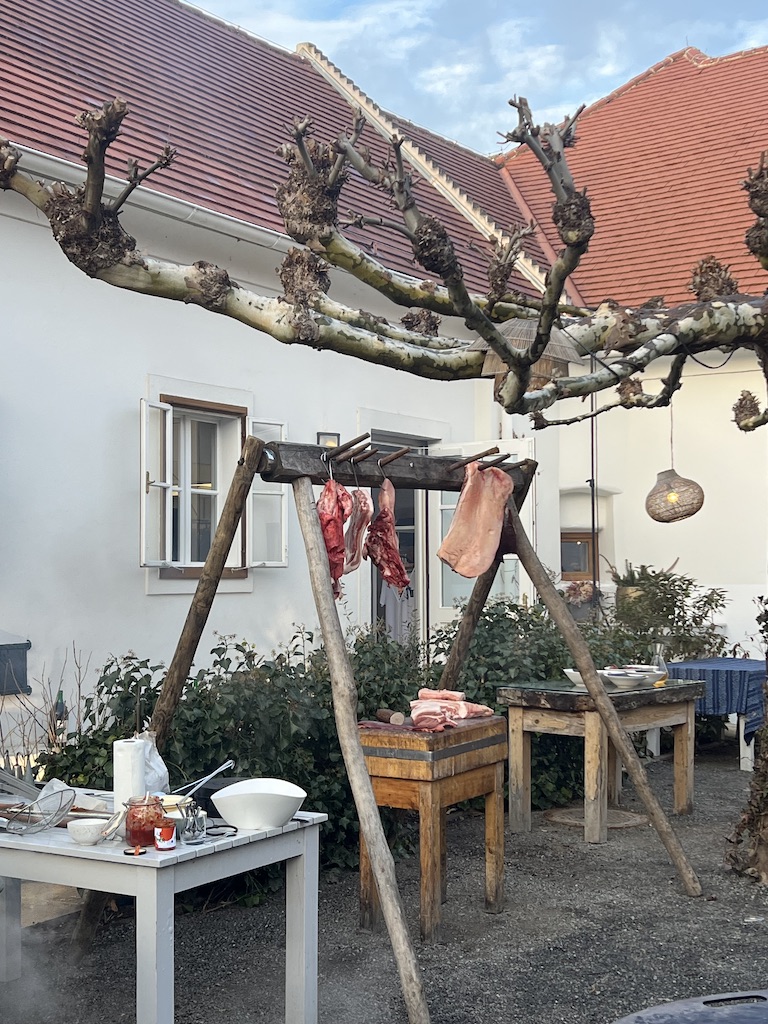
Cauldrons bubble, skillets sizzle and the wintry air carries the rich, tangy scent of offal. Chef Max Stiegl grabs the decanter and starts dipping chunks of sourdough bread in the fresh blood, offering tastes to those gathered around him.
I have travelled to the nose-to-tail restaurant Gut Purbach in Burgenland, about an hour’s drive from Vienna, just to experience a traditional sautanz (sow’s dance). This centuries-old ritual began in rural Austria, where villages gathered to cook and consume the whole hog, wasting nothing.
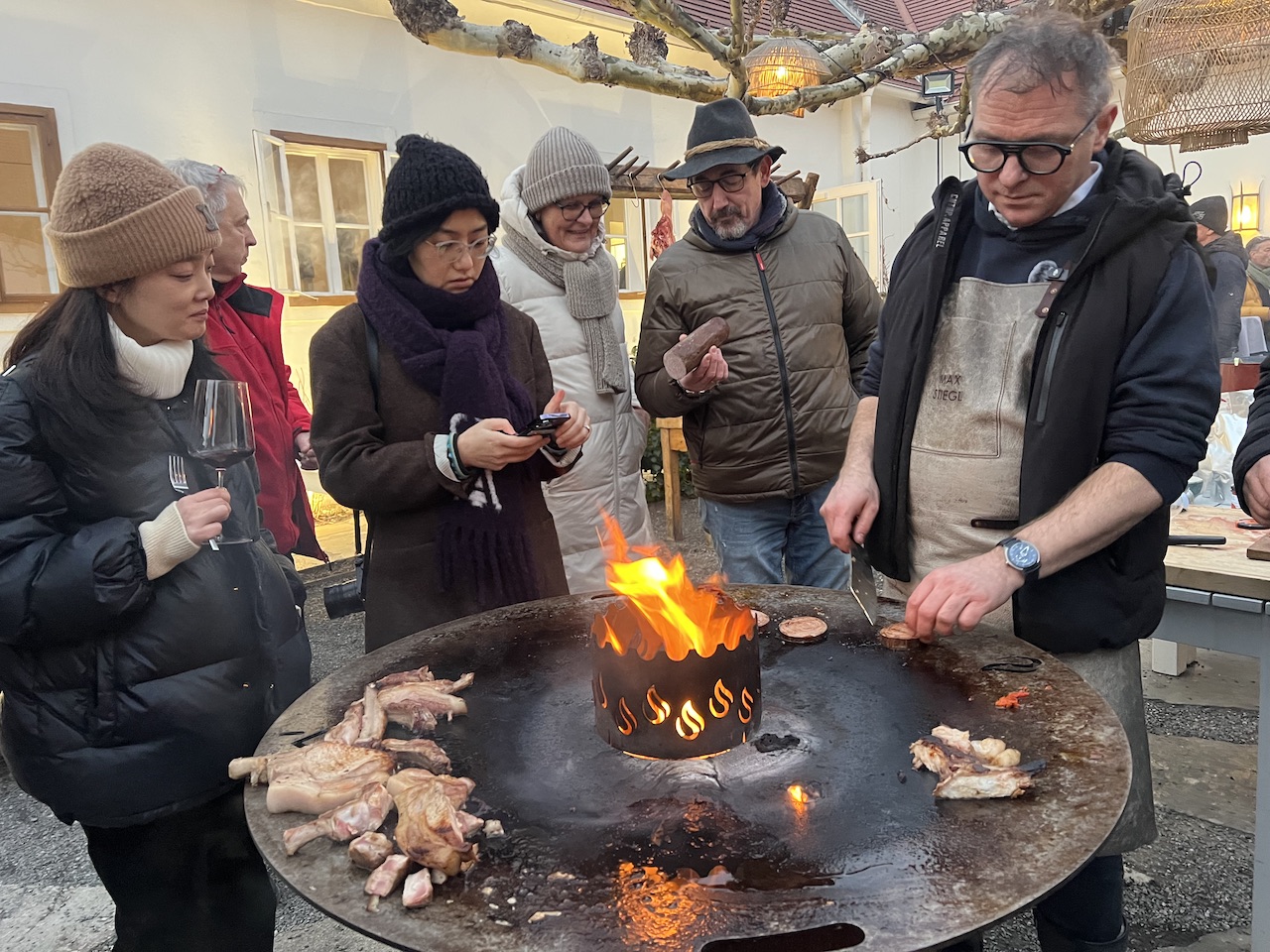
A humble tradition, revived
Through the course of the full-day affair, there will be about 25 dishes to sample ranging from the adventurous, like brains scrambled with eggs to scrumptious crisp fried crackling and freshly piped sausages.
Even knowing what’s in store, I balk at the fresh blood. An Austrian guest recalls how his father made him drink whole glasses as a child to “make him strong”.’ Instead, I glug a generous pour of Brutal wine by natural wine producer Christian Tsschida, a low intervention red made predominantly from pinot noir grapes from this region. I fare better with liver sauteed in red wine and kidney tossed with vinegar, schnapps and pepper – the latter reminiscent of a Sichuan mala stir-fry. By the time the sun sets, I am feasting heartily on smokey grilled chops, unctuous roast belly and paprika-spiced sausages.
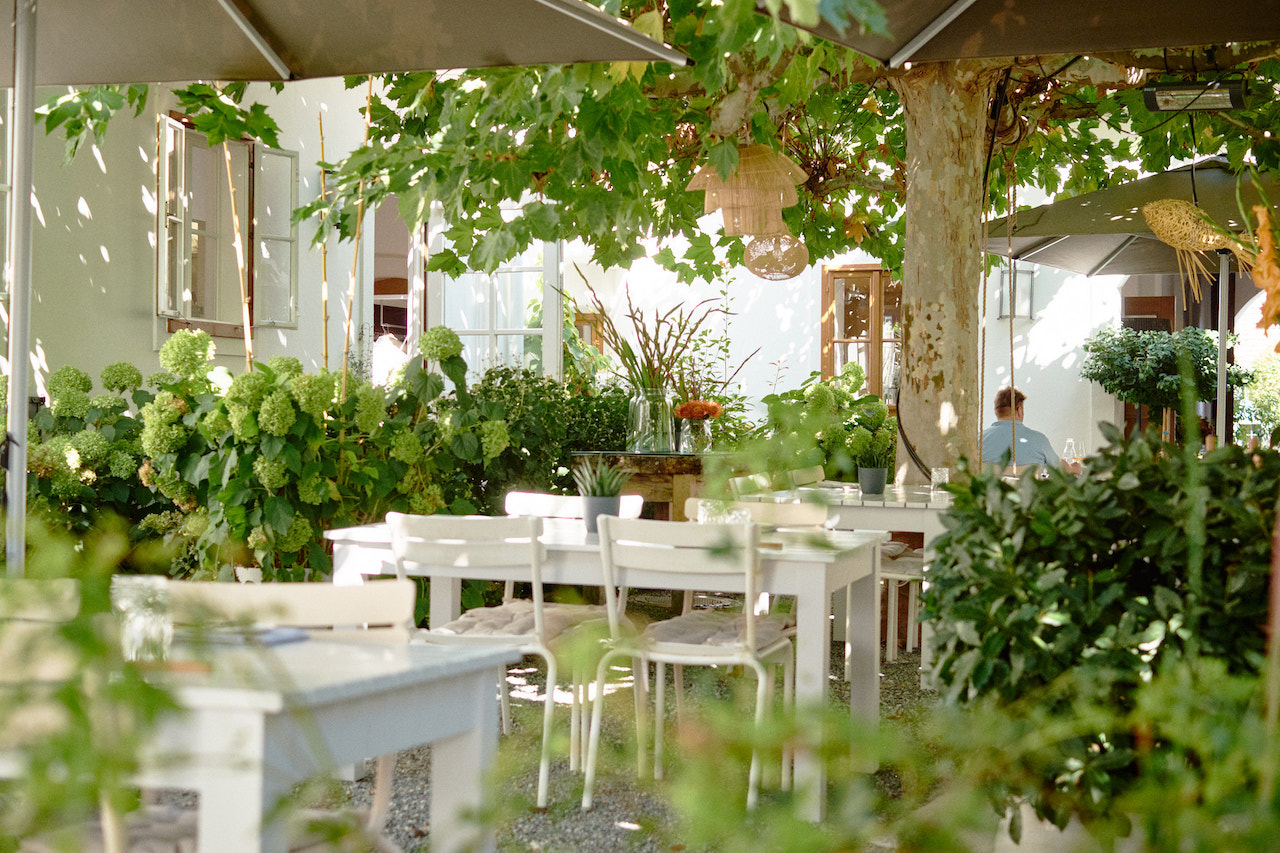
Gut Purbach’s sautanz is always festive, but even more so on this occasion, having just earned a Green Star in the 2025 Michelin Guide for its sustainable practices. For the first time since 2009, Michelin has expanded its reach beyond Salzburg and Vienna. Stiegl sees the award as a recognition of his efforts in reviving this food tradition, which he has been holding for 18 years.
Wine and dine
More broadly, the return of the guide offers a spotlight on the evolution of Austrian cuisine well beyond schnitzel, sausages and Kaiserschmarrn (torn up pancakes with compote, fresh berries and powdered sugar). With 82 Michelin starred restaurants sprinkled across the country – of which 67 are new – it provides a useful starting point for a road trip through Austria’s dynamic dining landscape. After all, Michelin’s original mission was about fuelling the journey, not seeking stars.
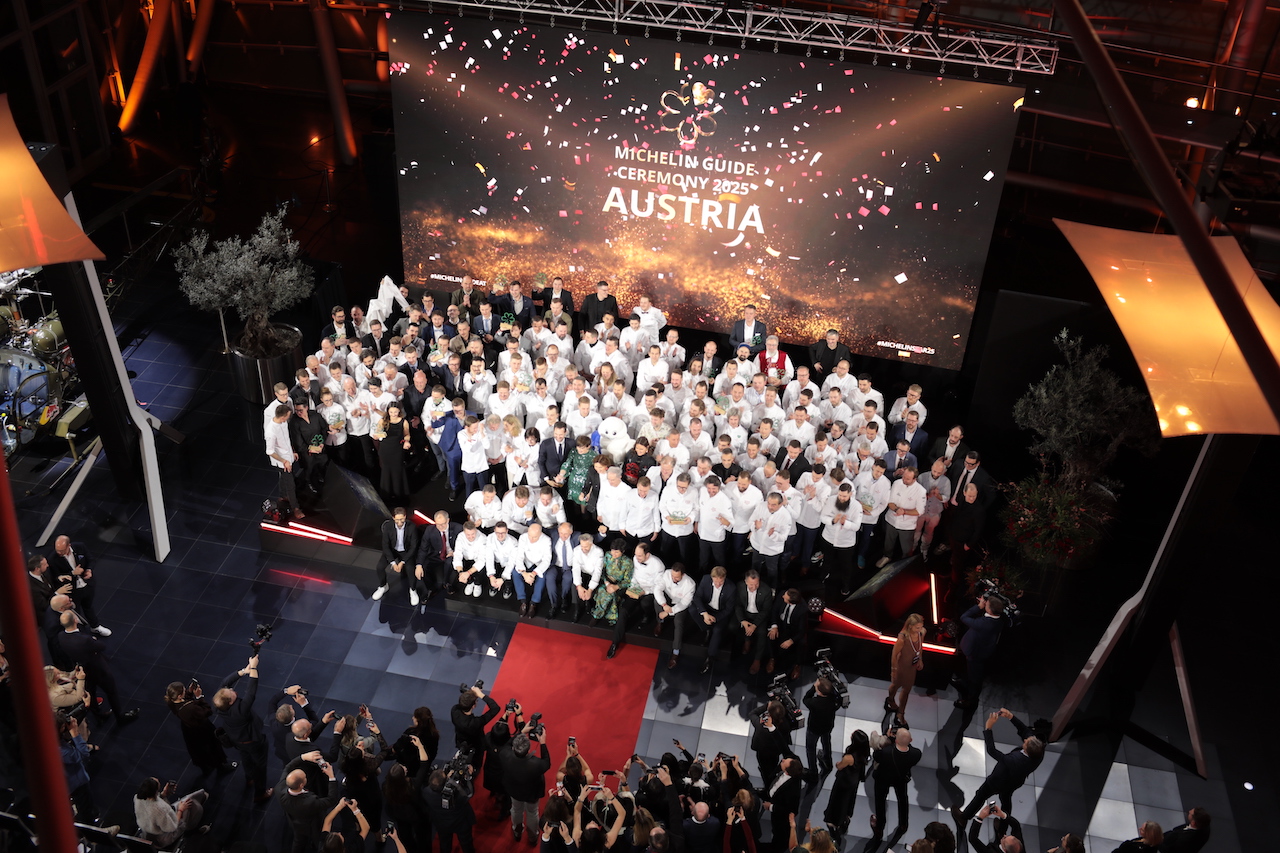
An hour from Gut Purbach is the wine region of Lower Austria, where one of the country’s most established chefs, Toni Morwald, has a small domain in the village of Wagram. His restaurant Toni M was just awarded a Michelin star and he also runs an inn, the Relais & Chateaux Hotel am Wagram as well as Weinblick (Wine View), a bespoke dining space located on Feuersbrunn, one of the oldest wine cellar lanes in the region. Morwald’s farm-to-table ethos shines through in dishes like pickled herring with Veltliner cabbage and Maibock fillet with celeriac and black morels.
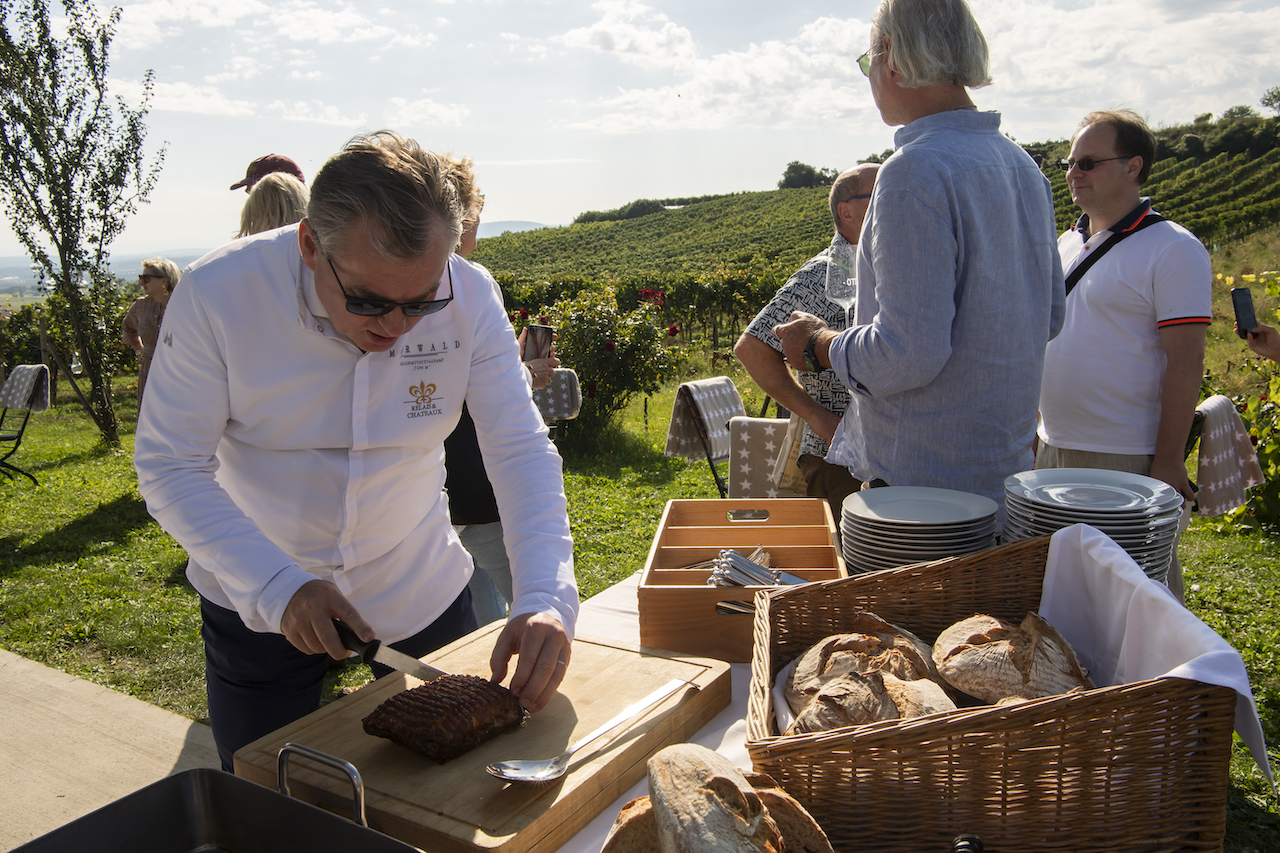
Local wines offer an ideal pairing, like the crisp Gruner Veltliner whites from OTT Winery Bernhard, a respected organic and biodynamic producer in Feuersbrunn. To work up an appetite, take a short sojourn to OTT’s vineyards and stroll through rolling rows of vines, soaking in panoramic views of the picturesque terraces.
Hidden gems
Even in destinations yet undiscovered by Michelin, surprises abound. The Wachau Valley, a UNESCO World Heritage site for its wine, is home to Melk Abbey, the largest baroque monastery in Austria. Its historic library with magnificent ceiling frescoes and over 100,000 books are a Harry Potter scene come to life, but what is lesser known is that visitors can arrange for a private onsite wine tasting, where Benedictine monks introduce wines cultivated from the abbey’s vineyards. To cap off the experience, a monk bestows a short blessing in a heartwarming ritual that feels like a spiritual toast to the journey ahead.
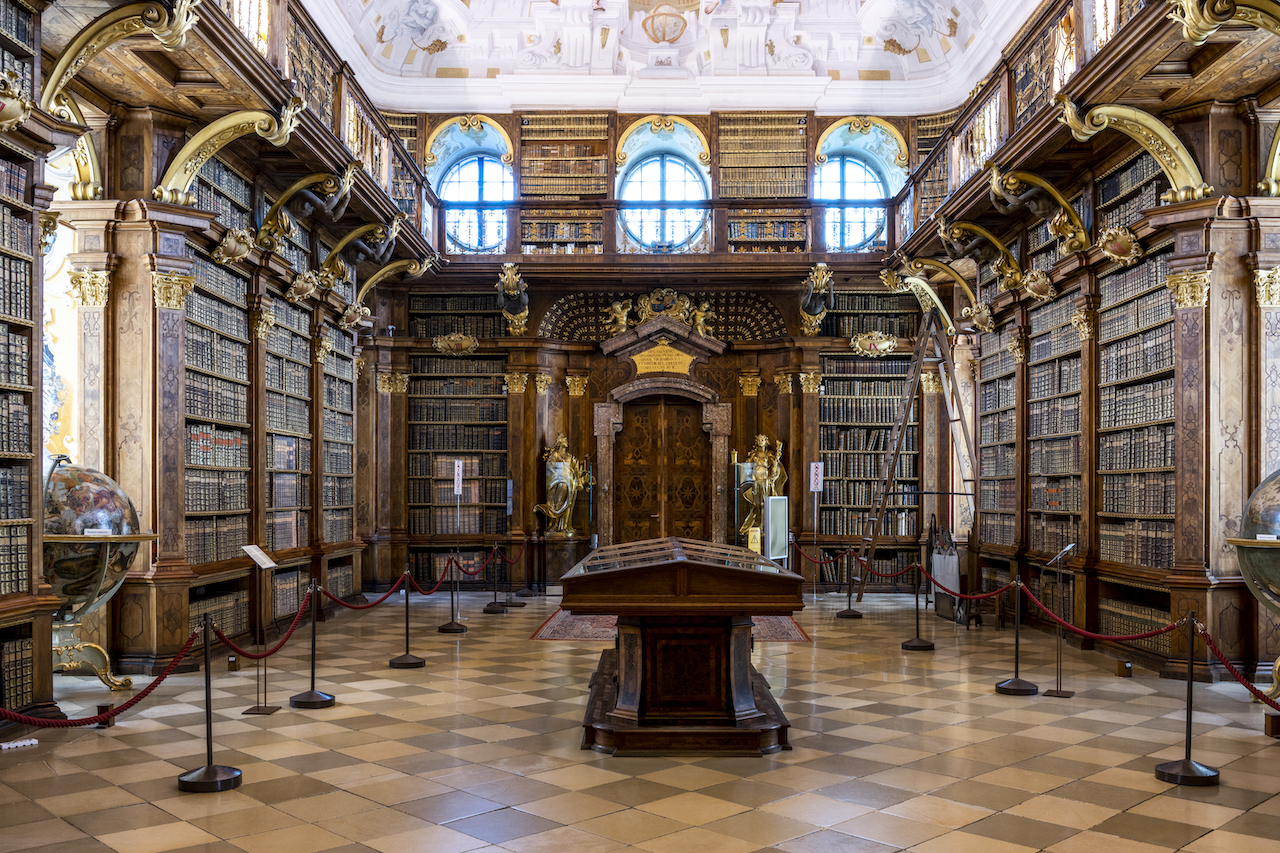
Nearby, the Schloss Greisslerei houses a specialty grocery shop (apricot jam, a local specialty, is a good souvenir) and a relaxed bistro where the chef creates a pasta of the day based on seasonal produce. We dined on a pungently delicious wild black garlic pesto tossed in a homemade pasta, specially created with a multitude of ribbons and folds designed to soak up the intense umami of the sauce.
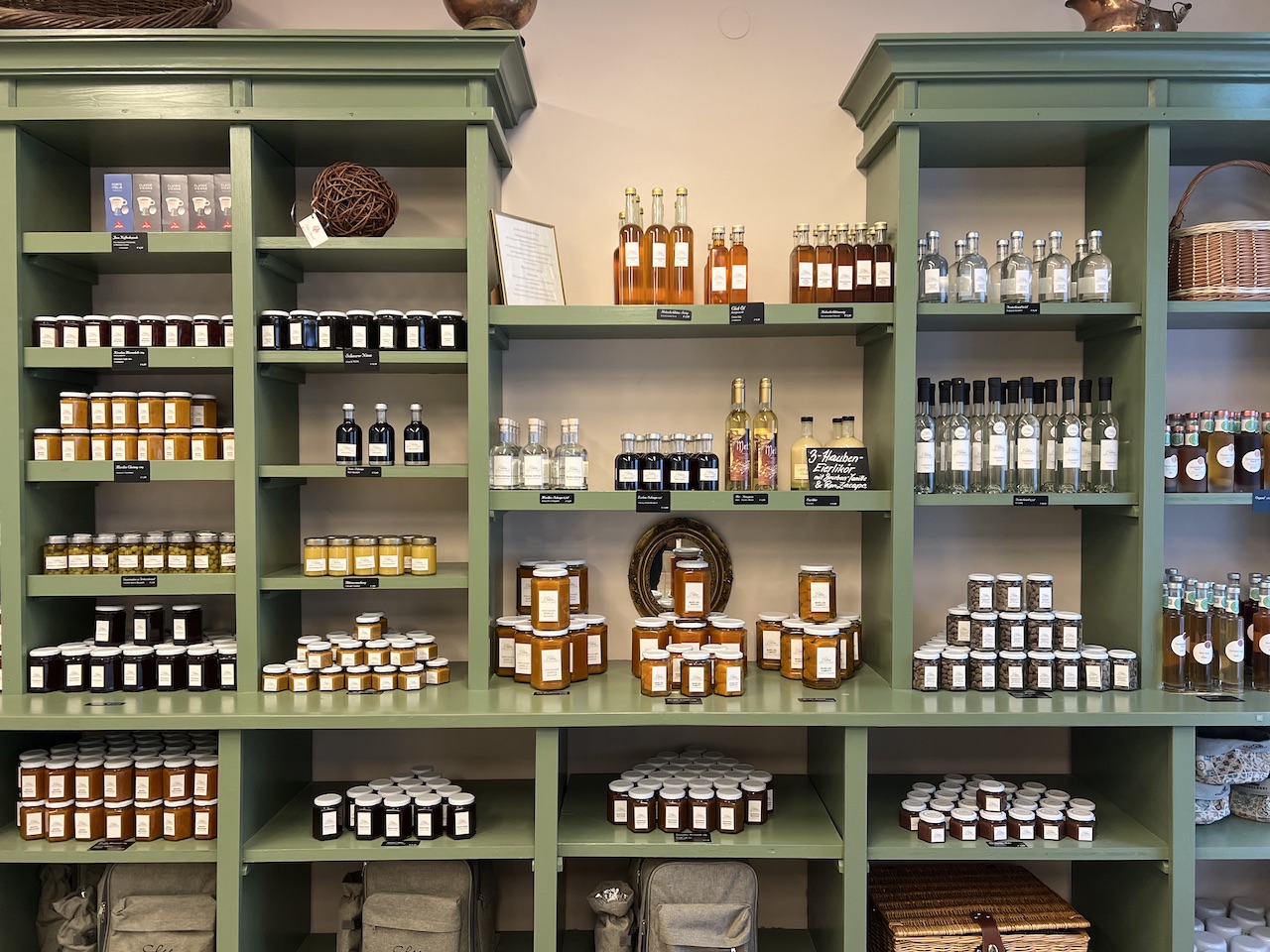
Taste of the alpine
For a change of scenery, the Schloss Restaurant at the newly opened Rosewood Schloss Fuschl offers old-world grandeur. Perched on the edge of a tranquil lake and surrounded by the Austrian Alps, the historic castle situated 30 minutes from Salzburg was once an aristocratic hunting lodge and has now been transformed into an elegant luxury hotel.
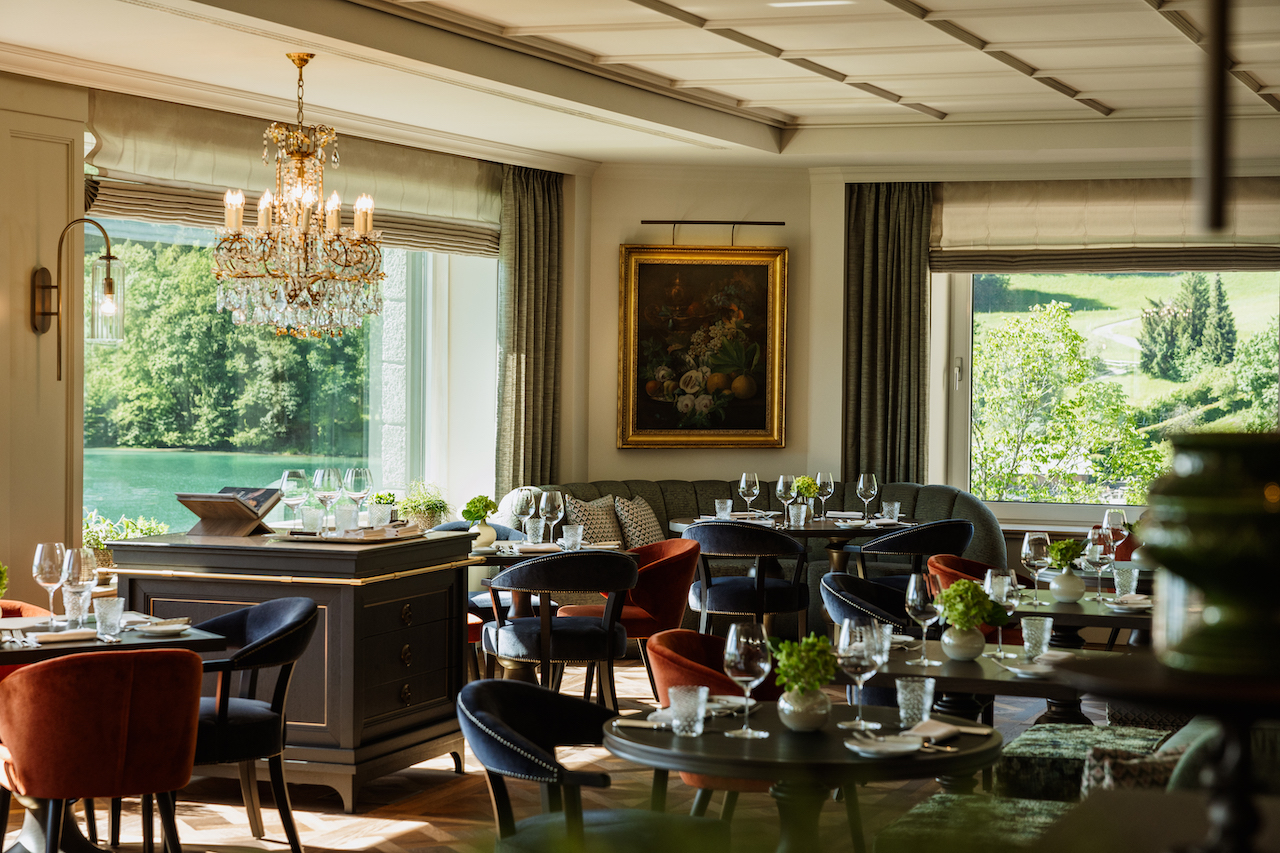
Head chef Julian Schwamberger showcases the surrounding Salzkammergut region with dishes like cured salmon trout from the castle fishery with buttermilk, kohlrabi and horseradish, and tartare of beef with Salzburg sturgeon.
For now, the restaurant remains a well-kept secret, known mostly to discerning locals and in-the-know guests. But with its unwavering commitment to elevating local cuisine, it may not stay under the radar for long – especially now that Michelin’s ever-watchful inspectors have taken note of the country’s evolving culinary landscape.
